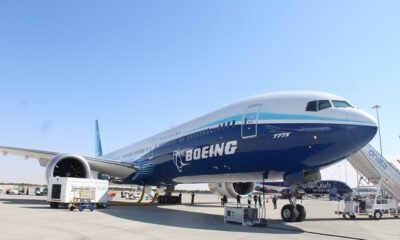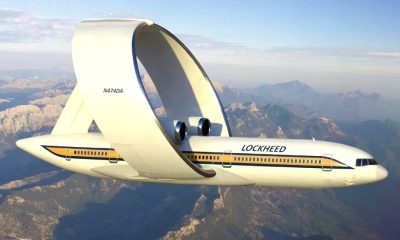Aerospace
Rolls-Royce and Air China announce Joint Venture for new maintenance, repair and overhaul facility in Beijing
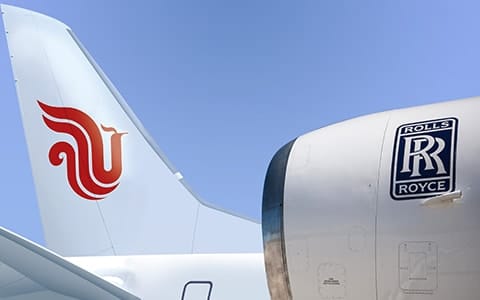
A new 50/50 Joint Venture, MRO facility has been announced by Rolls-Royce and Air China in Beijing, China. The new facility, known as BAESL (Beijing Aviation Engine Services Company Limited), will offer MRO assistance for the Rolls-Royce Trent 700, Trent XWB-84, and Trent 1000 aero engines. All three engine types are currently present in the fleet of Air China.
BAESL will be able to accommodate up to 250 shop visits annually when it reaches full capacity, which is anticipated to be reached in the middle of the 2030s. The facility will provide MRO services to Air China and our other airline clients based in Greater China and elsewhere. Currently, more than 550 aircraft are in service or on order with Rolls-Royce powering 60% of China’s wide body fleet. Our Trent 700 engines also power 90% of the nation’s Airbus A330 fleet, and the Greater China fleet accounts for 20% of all Trent engines currently in flight.
In order to strengthen our partnership with Air China, provide clients with the highest quality of service, increase our business’ cost-competitiveness, and create additional MRO capacity as shop visits increase, this JV is a crucial component of Rolls-China Royce’s strategy. By minimizing the overseas shipment of engines for MRO activities, it meets our sustainability goals by balancing in-region development with in-region capacity and providing customer proximity.
How Airbus gained trust in the Chinese aircraft market ?(Opens in a new browser tab)
Additionally, the new facility will help our capable, competitive, and adaptable global Care Network continue to grow. Our plan, which was presented at our Investor Day in May, calls for expanding our MRO network in a practical manner in order to serve our expanding fleet.
“The launch of this JV is a key milestone for Rolls-Royce in China, where we have been powering the country’s airlines for more than 50 years,” said Chris Cholerton, President – Civil Aerospace, Rolls-Royce.
China’s top 3 airlines will purchase nearly 300 Airbus A320neo aircraft.(Opens in a new browser tab)
The president of Air China, Mr. Ma Chongxian, stated: “Air China has long been committed to strengthening its aircraft maintenance skills and assuring the reliability of the fleet, while also working to enhance the industrialization of aircraft maintenance.

Aerospace
Which is bigger 777x or 787 aircraft ?
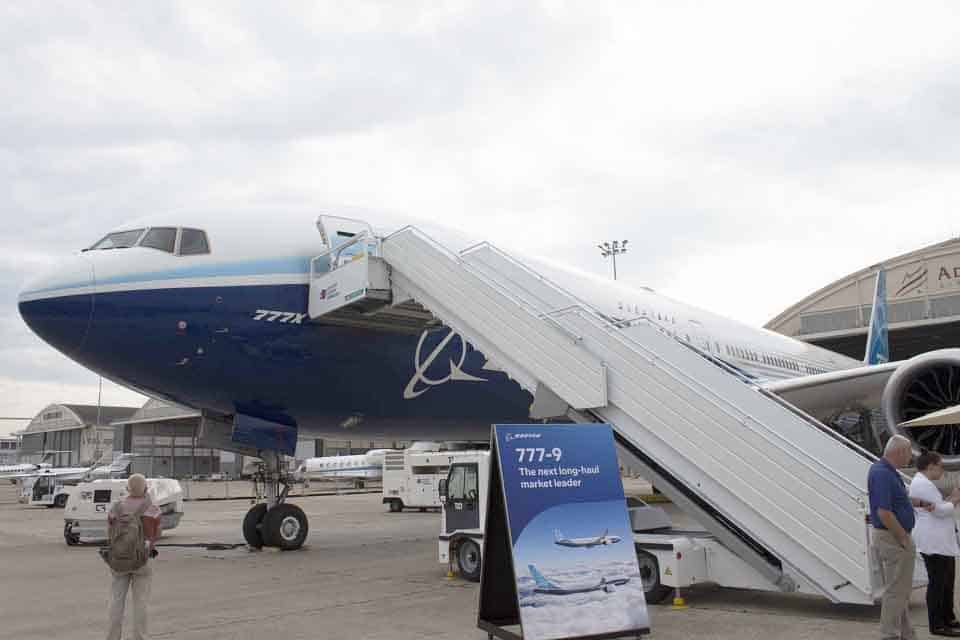
The 777X is a new series of the Boeing 777 family and is designed to be larger and more efficient than its predecessor. It features two variants: the 777-8 and the 777-9, being the larger of the two.
The Boeing 777X emerges as the larger sibling within the Boeing family, representing a significant leap forward in both size and efficiency. Comprising two variants, the 777-8 and the 777-9, the latter takes the crown as the larger of the two. With its expansive fuselage and impressive wingspan, the 777X is tailored for long-range journeys and boasts a substantial passenger capacity.
On the other hand, the Boeing 787, affectionately known as the Dreamliner, occupies a niche in the market as a smaller yet formidable aircraft designed for medium to long-range flights. Its distinguishing feature lies in its composite fuselage, a technological marvel that renders it lighter and more fuel-efficient compared to conventional aluminum counterparts. The Boeing 777X is larger than the Boeing 787 aircraft.
When it comes to passenger capacity, the 777-9 reigns supreme, typically accommodating a sizeable contingent of 400-425 passengers in its standard configuration. In contrast, the 787, with its more modest dimensions, typically carries between 240-290 passengers, depending on the variant and layout.
One of the remarkable innovations introduced with the 777X is its folding wingtips, a feature designed to address the logistical challenges of accommodating such a large aircraft in conventional airport gates. These folding wingtips enable the 777X to retract its wings, allowing it to fit into gates designed for smaller aircraft while still reaping the benefits of an extended wingspan during flight, thereby enhancing fuel efficiency and operational flexibility
Aerospace
China Secures Production Certificate for Mass Production of Pilotless eVTOL Aircraft
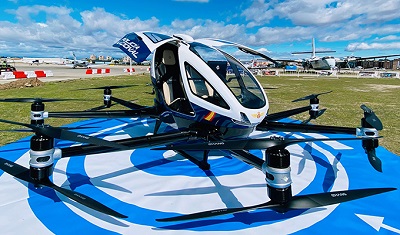
The first passenger-carrying pilotless electric vertical takeoff and landing (eVTOL) aircraft in the world, the EH216-S, has received the Production Certificate for its eVTOL aircraft from the Civil Aviation Administration of China (CAAC).
This is a significant milestone for EHang Holdings Limited, the leading UAM technology platform company in the world. This outstanding accomplishment is another big step towards mass manufacturing for the eVTOL aircraft and the ensuing commercial operations, building on the ground-breaking acquisition of the Type Certificate and the Standard Airworthiness Certificate for the EH216-S.
The PC is a crucial certificate that the aircraft maker receives from the CAAC, the country’s aviation authority. By obtaining this certificate, EHang has demonstrated that it has set up a quality management system for mass production that satisfies the airworthiness regulation standards set forth by the CAAC, and the company has been given permission to continue producing mass quantities.
It is also a strong guarantee of the calibre of the goods made by EHang. Raw materials, supplier management, manufacturing organisation, production quality control, aircraft pre-delivery test, after-sales repair and maintenance, etc. are all included in the mass production quality management system for the EH216-S.
To ensure that every aircraft and its components that roll off the production line strictly adhere to the approved type design and safety requirements, the system sets clear guidelines and documentation for every step in the production procedure. This ensures comprehensive traceability and safety control.
Aerospace
Four Airbus A380 Superjumbos lined up to be scrapped
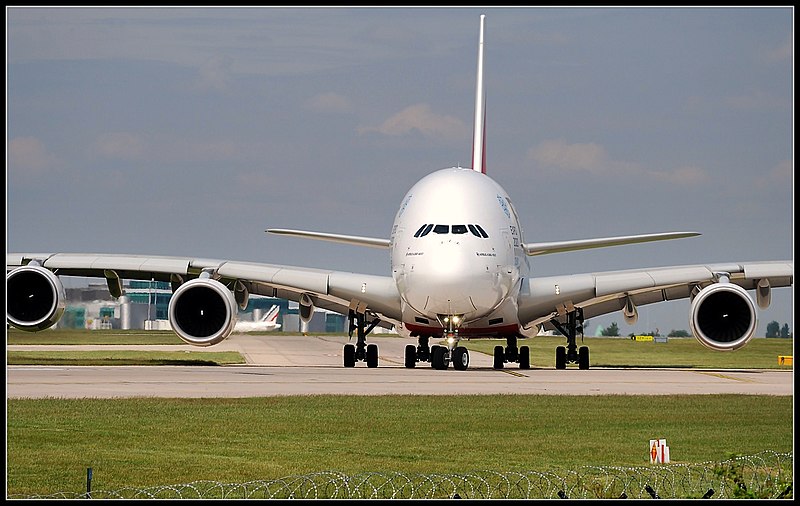
In a strategic move aimed at reclaiming valuable resources from the iconic Airbus A380 aircraft, VAS Aero Services and Dr. Peters Group have announced a significant collaboration.
This partnership marks a milestone in aviation logistics and aftermarket services, with four of these colossal planes slated for teardown and redistribution of used serviceable material (USM).
The venture between VAS Aero Services, renowned for its expertise in aircraft dismantlement, and Dr. Peters Group, a prominent Germany-based investment fund management firm, underscores a commitment to sustainable aviation practices. This isn’t their first foray into scrapping A380s; their successful partnership has already seen the dismantlement of these aircraft, making them pioneers in this niche.
Under the agreement, the latest consignment brings the tally to eight A380s entrusted to VAS by Dr. Peters Group. Managing Director Christian Mailly of Dr. Peters Group emphasized the trust placed in VAS, citing their unparalleled capabilities in dismantlement and aftermarket sales network. It’s a strategic move in response to the growing demand for quality USM parts, particularly with the resurgence in reliance on the A380.
Notably, the teardown process will be carried out at various locations, optimizing the positioning of harvested parts to cater to different markets. While some parts will be positioned in Europe to support operators in the region and the Middle East, others will remain in the Asia-Pacific region. This meticulous strategy ensures efficient access to spare parts, benefiting MROs and airlines across these markets.
The decision to retire these A380s comes at a time when operators are reassessing fleet strategies amidst evolving market dynamics. Despite initial plans for quick retirement due to the emergence of more fuel-efficient alternatives, factors such as a rebound in long-haul demand and delays in new widebody deliveries have prompted operators to reconsider. The A380, with its unique capacity and capabilities, presents a practical solution for short-term capacity management.
















